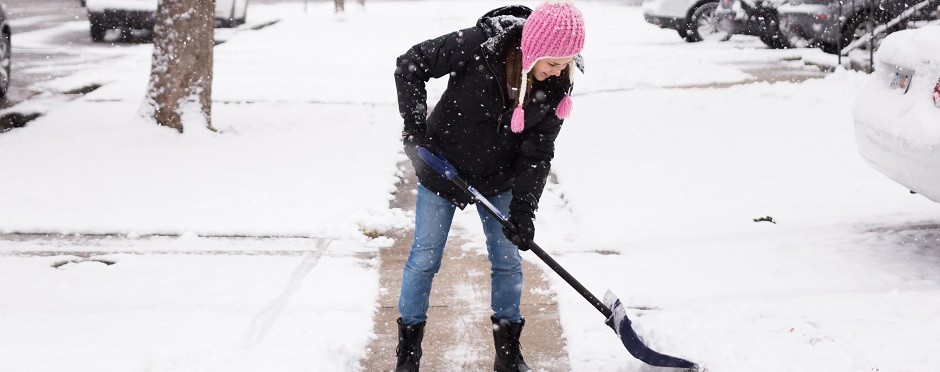
S-nowhere to Go? Try These Exercises!
Leave a CommentThere are many fun activities to perform in the snow including snowboarding, skiing, sledding, and even snowshoeing! However, not all of us have the ability to enjoy these activities due to lack of accessibility or because it’s just too dangerous. Here are just a couple alternative exercises and activities most people can perform around their own home for a great work out!
Shoveling
This age-old classic activity can really give you a great work out. By pushing a standard shovel, you work more muscles than you think! Some of these include:
- Hips (gluteus maximus/hamstrings)
- Knees (quadriceps)
- Ankles (calves)
- Core (abdominals/back)
- Shoulders (pec muscles/deltoids)
- Elbows (triceps)
By lifting the snow with your shovel, you can increase the intensity of the workout, particularly in the core, shoulders, and knees.
Always be careful when lifting snow. Never bend, lift and twist as this sequence can cause pain and injury in your back. It is much safer to keep the snow in front of you, and either throw it in front of you or rotate/turn by taking steps. Also ensure to warm up properly by easing into the activity as performing high intensity exercise in the snow can increase the stress placed on your heart. For just a few stretches to try before shoveling, click here.
Walking in Snow
- Done with shoveling the snow? Try walking in it! You can walk in all directions to strengthen your hips and enhance your balance.
- Walking forward will enhance the hip flexor muscles located on the front of your hips and thigh, while forcing you to keep your balance with every step.
- Walking backwards in the snow will enhance the hip extensor muscles located on the back of your hips and thighs.
- Walking sideways in the snow will enhance the activity of the side muscles on the hips and thighs. Ensure to keep the knees bent slightly in a squat position while walking sideways to target the important hip stabilizing muscle, gluteus medius.
- To increase the intensity of the exercise while walking in all directions, simply perform the walks in deeper snow! Performing the exercises at a slower and controlled pace will also make each exercise more difficult. Be sure to dress properly before you perform this exercise in order to avoid any cold weather-related injuries. For more tips including the different types of cold weather injuries, click here.
- The last exercise includes walking while marching in the snow. This motion will challenge your balance by forcing you to stand on one leg for a short period of time. To increase the difficulty, simply take slower steps and maintain a single leg balance for a longer duration.
- Snowshoes can also be used when walking in the snow. Snowshoes are a flat and wide form of footwear which assists in distributing the weight of a person over a larger area so the person’s foot doesn’t completely sink into the snow. A local recreational equipment store or your favorite online retailer should carry these shoes.
If you find yourself experiencing poor balance, pain, or weakness in any of the aforementioned muscle groups or joints, the experts at Athletico can help! Schedule a Free Assessment to learn about areas of weakness that may need to be addressed. Our team is happy to provide treatment recommendations to help you get back to doing the things you love to do. Free assessments are available in-clinic and virtually through our Telehealth platform.
Physical therapy is usually the thing you are told to do after medication, x-rays or surgery. The best way to fix your pain is to start where you normally finish – with physical therapy at Athletico.
The Athletico blog is an educational resource written by Athletico employees. Athletico bloggers are licensed professionals who abide by the code of ethics outlined by their respective professional associations. The content published in blog posts represents the opinion of the individual author based on their expertise and experience. The content provided in this blog is for informational purposes only, does not constitute medical advice and should not be relied on for making personal health decisions.
